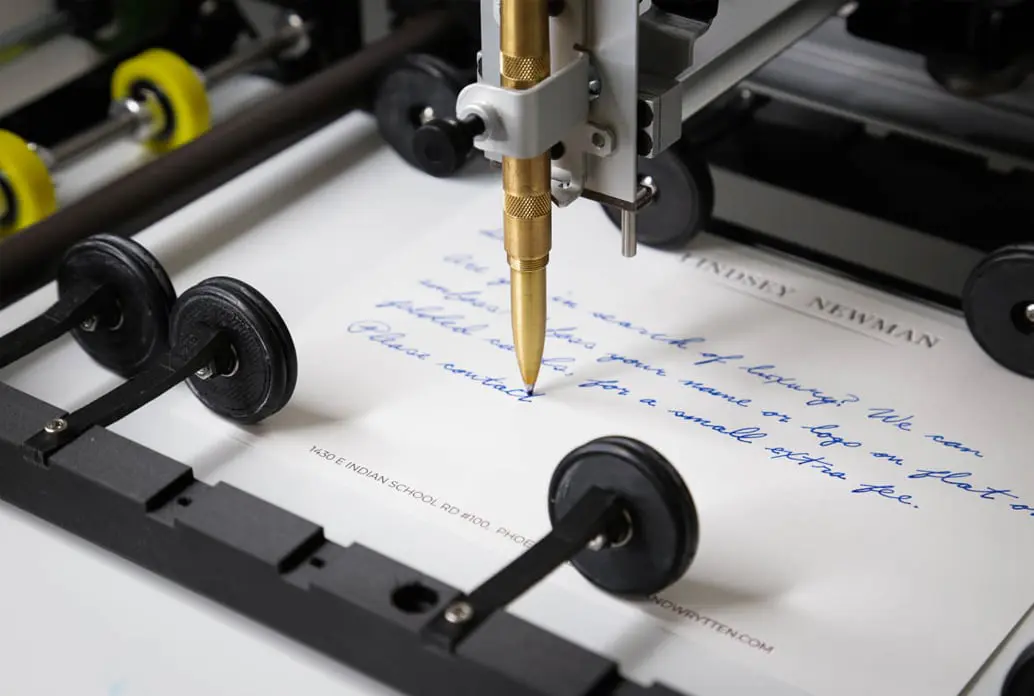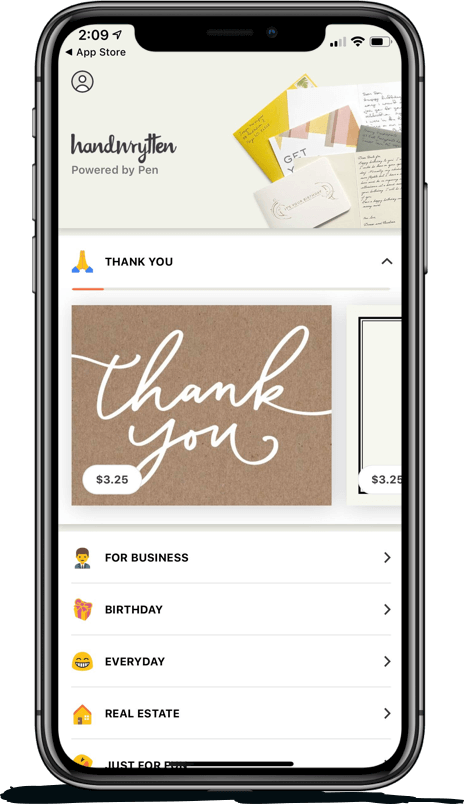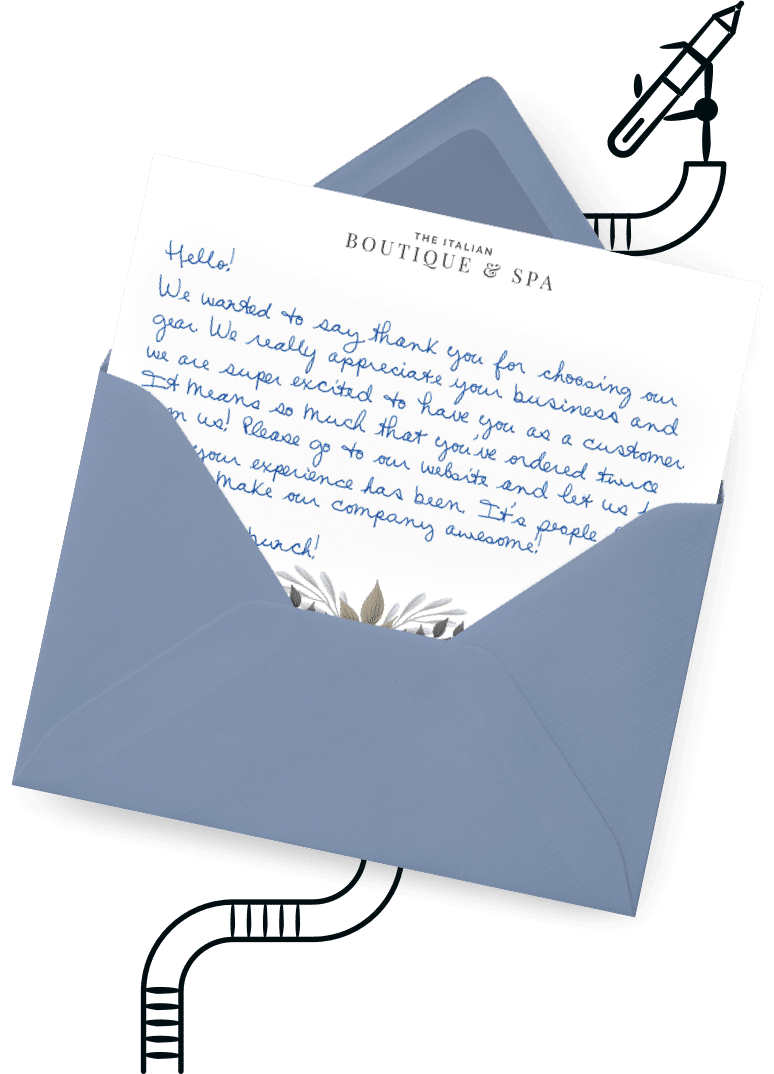
9280 S. Kyrene Rd.
Suite 134
Tempe, AZ 85284
Phone: +1 (888) 284-5197
Email: contact@handwrytten.com



You have been subscribed. Thank you!
Imagine a world where your nonprofit organization not only attracts new donors but keeps them engaged and committed to your cause for years to come. How much more impact could you make if you didn’t have to constantly search for new funding sources?
The secret to achieving this vision lies in learning how to increase donor retention for your nonprofit. In this blog post, you’ll discover strategies and insights to help you increase donor retention, build lasting relationships, and ultimately, ensure the long-term success of your organization.
Organizations with a lower donor retention rate must devote considerable resources to donor acquisition. Information from the Nonprofit Quarterly says that it typically costs about 5x as much to acquire a new donor as it does to do business with a current one. Quite frankly, that is a baffling number to consider.
Let’s just imagine that it takes you $10 per annum to maintain a single donor by sending them custom handwritten notes. You build a stronger relationship with them, understand who they are better, and integrate them into your nonprofit at a deeper level.
On the flip side of the coin, you can spend $50 per annum to acquire a new donor. This doesn’t take into account what it costs for you to develop a greater understanding of who they are and how their mission in life relates to yours. It also means you must be much more hands-on with your communication. Otherwise, you may lose them and have to spend another $50 to acquire another donor!
Now scale this to 10, 100, 1000 donors – there are thousands of dollars and hundreds of hours of your time being lost due to a lack of emphasis on retaining your donors.
The labor-intensive endeavor of donor outreach requires nonprofits to continually strive to secure new donors to advance their mission and make up for the loss of former donors, constantly keeping them on the backfoot, both in terms of time and financial resources.
Gaining insight into your donor retention rate is integral to the nurturing and maintenance of donor relationships, playing a key role in the overall success of a nonprofit organization.
According to the Fundraising Effectiveness Project 2020 Fourth Quarter Report, the overall donor retention rate in 2020 was 43.6%, while the new donor retention rate was 19.2%. Compared to 2019, these numbers were about 4.1% lower.
These numbers highlight that retaining donors is a primary challenge faced by numerous nonprofits. There are a plethora of reasons nonprofits may struggle with donor retention, with some of the most prominent reasons being a lack of engagement and communication.
Implementing donor retention strategies such as:
can lead to increased donor retention rates. By focusing on these strategies, your nonprofit can overcome retention challenges and enjoy long-term success.
As we’ve already established, donor retention plays a significant role in an organization’s overall fundraising strategy, providing long-term financial stability and a more cohesive donor base at the same time.
A well-executed donor retention plan can result in a stable and reliable source of funding, which ultimately allows organizations to focus on achieving their mission.
Donor retention is essential for the success of nonprofits. By implementing effective strategies and continuously assessing and improving your efforts, you can increase donor retention rates and build strong relationships with your donors. This not only benefits your organization in the long run but also has a positive impact on your mission and the lives you are working to change.
One of the easiest ways to establish a better relationship with your current clients is by using Handwrytten’s handwritten notes. We offer high-quality, personalized handwritten notes that can be sent to donors automatically, showing them your appreciation and strengthening their connection to your organization.
Ok – so we get that having a high donor retention rate is important. It saves your nonprofit money and connects you with your donors to a greater level. So, how can you determine if you have a healthy donor retention rate?
Evaluating your organization’s donor retention rate requires calculating the percentage of donors who continue to donate beyond their initial contribution. To calculate your donor retention, divide the number of repeat donors in the current year by the number of donors from the previous year.
For example, let’s say that you had 200 total donors last year, but only 100 of those 200 donors were recurring donors. That means that only 50% of your donors were ‘retained’, hence, a 50% retention rate.
Knowing this rate helps organizations identify areas for improvement and implement strategies to increase donor retention.
Several factors can influence donor retention rates, including communication, donor involvement, and donation options.
Communication is key in retaining donors, as it allows organizations to continually engage and inform donors about their impact. By personalizing communication and offering multiple channels for donors to stay connected, organizations can enhance donor retention rates. Without consistent communication, donors may lose interest in your cause.
Donor involvement is another crucial factor in donor retention. Organizations must strive to involve donors in various ways, such as volunteering opportunities or special events, to maintain a strong connection and sense of ownership with the organization.
Finally, offering a variety of donation options can also impact donor retention rates. By providing donors with convenient and flexible ways to donate, organizations can make it more likely for donors to continue giving in the future.
Donor recognition is also crucial in cultivating relationships with donors and inspiring them to continue their support. By providing various giving options, such as recurring gifts or one-time donations, organizations allow donors to choose the method that best suits them, which can help boost donor retention rates.
Having grasped the importance of donor retention and the factors that most strongly influence it, let’s explore five effective strategies designed to enhance donor engagement and foster long-term support:
Personalizing donor communication involves segmenting donors based on shared characteristics or behaviors, such as age group or giving frequency. This seems like an extremely basic concept to understand (and it is!), but it is crucial to establish a solid baseline of understanding who your donors are.
By tailoring messages to specific donor segments, your nonprofit can increase the likelihood of engaging donors in a manner that resonates with them and their lived experiences. This personalized approach makes donors feel appreciated and valued beyond a monetary transaction.
Personalizing your communication with individual donors begins with having a well-maintained donor database. This should include information and records, including:
When you have this information isolated to a finite location, like a spreadsheet, it becomes infinitely easier to understand and segment your donors based on different metrics.
Once this has been created, pick and choose between sending your donors handwritten thank-you notes, impact stories in newsletters, and other personalized touchpoints to create a sense of personal connection between your organization and them. Incorporating visual storytelling elements, such as photos and videos, can further enhance donor communication and foster lasting relationships.
Offering recurring gift options is another effective strategy for promoting donor retention. Providing donors the convenience of becoming long-term supporters with a single, one-time donation can increase donor retention rates. Corporate philanthropy, such as matching gifts, can also be facilitated through recurring giving options, offering additional incentives for donors to commit to long-term support.
To encourage first-time donors and existing donors to join a recurring giving program, organizations can:
These strategies can help retain donors and motivate them to continue their support.
As aforementioned, fostering strong donor relationships is crucial for long-term donor retention. Keeping donors informed about the organization’s progress, successes, and challenges through regular updates, such as monthly or quarterly reports, can help build trust and loyalty. Sharing impact stories that emphasize the positive effects of the organization’s efforts can also inspire donors to continue their support.
Providing opportunities for donor involvement, such as volunteer events and other activities, can further strengthen relationships and encourage long-term commitment. Engaging with donors through email, social media, or other platforms can create a sense of community and connection, ultimately leading to increased donor retention rates.
Next, let’s discuss the value of using donor management software to enhance donor retention rates. Donor management software can help organizations streamline and automate tasks related to donor communication, tracking donations, and managing relationships.
By centralizing all donor information and records in one convenient location, organizations can easily access and analyze data to understand donor patterns and behavior. This insight allows for more personalized outreach and targeted strategies to increase donor retention.
Additionally, donor management software can also help automate processes such as donation thank-yous, recurring gift reminders, and acknowledgment letters. Handwrytten’s software integrations allow us to do this for you too, making sending handwritten cards a breeze. This frees up time for organizations to focus on other aspects of their fundraising efforts while still maintaining personalized communication with donors.
The selection of donor management software should take into account features like donor segmentation, automated donation processing, and reporting capabilities. The user interface and ease of use should also be taken into account, as well as compatibility with other systems and the quality of customer support provided by the software provider.
Choosing the right software can not only help streamline your donor retention efforts but also provide valuable insights about your donor base, allowing you to make data-driven decisions and improve your overall fundraising strategy.
Some of the most popular donor management tools we know that our clients use include:
Ultimately, the right donor management software will enable your organization to better manage and engage with donors, resulting in increased donor retention rates.
In addition to tracking key donor retention metrics such as donor retention rate, repeat giving, and upgraded giving donor management tools can also help automate personalized communication, monitor donor engagement, and create a more seamless donor experience. By maximizing the potential of these tools, organizations can better understand their donors, implement more effective retention strategies, and ultimately, increase donor retention rates.
Continuously monitoring and adjusting your donor retention strategy is vital to ensuring long-term success and growth. Regularly reviewing donor retention metrics and analyzing donor data can help identify areas for improvement and inform adjustments to your strategy.
Additionally, actively seeking feedback from donors through surveys or personal outreach allows for a deeper understanding of their motivations and preferences. This information can be used to tailor communication and engagement efforts, further solidifying relationships with donors.
Incorporating new tactics and experimenting with different strategies can also provide valuable insights and help optimize donor retention rates. By continuously evaluating, adapting, and improving your approach to donor retention, you can foster lasting relationships with donors and drive continued support for your cause. After all, happy donors equal loyal donors!
The success of your donor retention efforts can be effectively gauged by tracking key metrics, including donor retention rate, donor lifetime value (LTV), and donor attrition rate. These metrics can provide valuable insights into the effectiveness of your strategies, as well as areas that may require improvement.
As we’ve already discussed, the donor retention rate measures the percentage of donors who continue to support your organization over time. A higher donor retention rate indicates strong relationships and a more loyal donor base.
Donor LTV quantifies the total value a donor contributes to your organization throughout their lifetime. By tracking this metric, organizations can better understand the impact of their retention efforts and identify areas where they may be losing potential lifetime value from donors.
Finally, the donor attrition rate measures the percentage of donors who stop supporting your organization. Tracking this metric can help identify any red flags or areas for improvement in your retention strategies.
Now that we understand how and what metrics to track, let’s discuss a specific group of donors: lapsed donors.
Learning from lapsed donors is crucial for identifying areas for improvement in your donor retention efforts. By engaging with lapsed donors and gaining insight into their motivations and reasons for lapsing, organizations can make informed adjustments to their donor retention strategy.
Examining data on lapsed donors can help organizations discern patterns and trends in donor behavior, as well as gain insight into why these donors have lapsed. By sending targeted communications to donors who have not given recently and demonstrating gratitude to former donors, organizations can motivate them to resume their support.
In conclusion, mastering donor retention is the key to ensuring the long-term success and sustainability of your nonprofit organization. By understanding the importance of donor retention, calculating your retention rate, implementing effective strategies such as personalizing communication, encouraging recurring giving, and utilizing donor management software, you can build lasting relationships with your donors and secure their ongoing support. Continuously monitoring and adjusting your donor retention strategy will ensure that your organization remains on the path to growth and success.
Handwrytten’s automated handwritten notes and cards can be a valuable tool for organizations looking to improve their donor retention rates. By personalizing communication and showing gratitude to donors, Handwrytten can help organizations strengthen donor relationships and encourage long-term commitment.
In addition, Handwrytten’s integration with various donor management software platforms allows for seamless tracking and personalization of donor communications, making it even easier for organizations to implement a successful donor retention strategy. By utilizing Handwrytten’s services, organizations can elevate their donor retention efforts and ultimately ensure the lasting support necessary to achieve their mission. So why wait? Start using Handwrytten today and see the positive impact on your organization’s donor retention rates!
The average donor retention rate for nonprofits is 40-45%, meaning that if 100 donors gave to your organization last year, only around 40-45 of them will donate again in the coming year. This is a good baseline to shoot for – a donor retention rate higher than 45% is above average.
Strengthening donor relations requires proactive measures such as getting personal, prospecting donors, segmentation, setting time for communication, showing donor impact, thanking them, surveying donors, responding to feedback, delivering on promises, attending events, visiting programs, and celebrating success. By consistently engaging with donors in a meaningful way, trust is built, leading to long-term support for the organization.
Boost donor acquisition by setting clear goals, segmenting your donors, building relationships, leveraging social media, and mastering e-mail outreach while continuously measuring and evaluating results.
Retain monthly donors by thanking them quickly, demonstrating the impact of their gift, getting personal with your thank-yous, contextualizing follow-up, keeping an eye on recurring plans, using events to further nurture donors, surprising and delighting them, creating a feedback loop, making monthly giving a prominent option, making it a club people want to join, keeping up with credit card changes, finding unique ways to say thank you, and staying in touch to keep them updated on the impact of their donation.
To calculate your organization’s donor retention rate, divide the number of repeat donors in the current year by the number of donors from the previous year.


Scale your handwritten outreach, creating positive impressions and long lasting bond.
Sign Up Today!


Over 100 designs to choose from or design your own. Our online card customizer makes it simple.
Check Out Our Cards!





